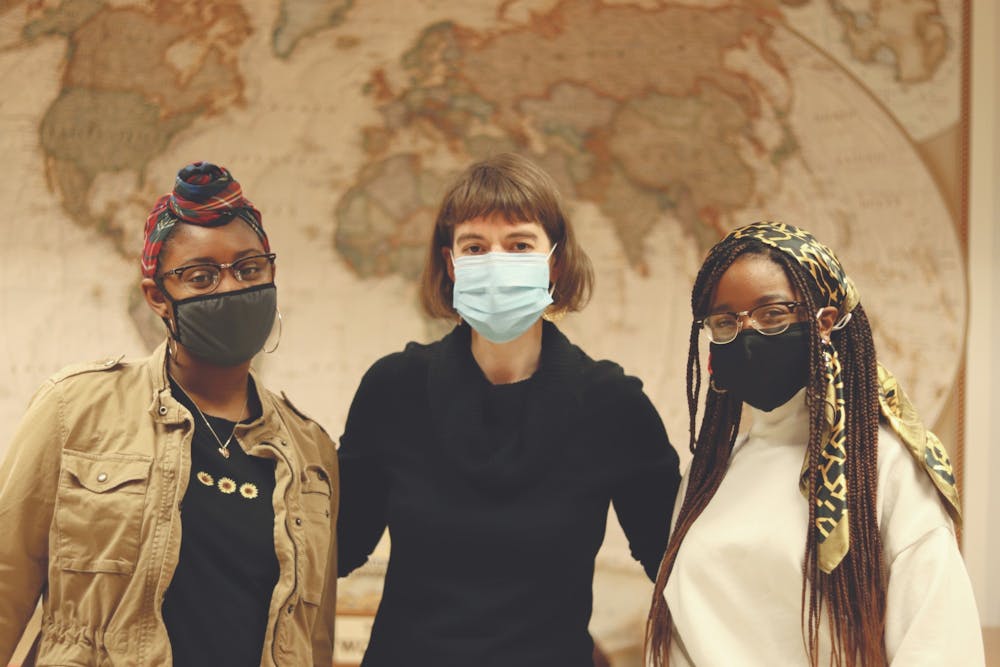Visit the Student Anti-racism and Intersectionality Advisory Council’s (SAIAC) website to learn about anti-racism, and follow its Instagram page @bsu_saiac.
Source: Emily Rutter, associate professor of English
In January 2020, Jordyn Blythe, junior communications studies and political science major, attended Beverly Tatum’s speech at Ball State University on why schools are responsible for fostering conversations about the importance of diversity and inclusivity.
“I said, ‘That’s a lot easier to do when you’re in an elementary school or high school and students have to do whatever the administration puts out, but in college, there’s way more choice,’” Blythe said.
Tatum had a solution to Blythe’s problem: Offer a class where students can have conversations about racism, anti-racism, intersectionality and inclusive excellence.
Emily Rutter, associate professor of English, and Blythe partnered with multiple other students to establish the Student Anti-racism and Intersectionality Advisory Council (SAIAC) to create this class at Ball State.
“It was by design that we make sure that I, particularly as a white faculty member, was really actively collaborating with students of color on campus and valuing them as institutional stakeholders in this kind of work,” Rutter said.
Over time, the SAIAC began partnering with other professors and groups, such as the Counseling Center’s diversity team, to create a wider network of people who are dedicated to providing students with these resources about anti-racism and intersectionality.
“We discussed the importance of having faculty members work with students to design such a class,” Rutter said. “It wasn’t just understanding race, but instead, actively working to dismantle racism on our campus, in Indiana, in our nation and in the world.”
This class, “Understanding Race, Anti-Racism and Intersectionality,” is offered in the Honors College and the College of Sciences and Humanities, with Rutter and her colleagues teaching the course.
In addition to providing resources through a class, SAIAC also has a website and an Instagram account that give people access to anti-racism materials and events.
Lauren Reynolds, senior interpersonal communication major, is one of the students in charge of running the Instagram account.
“We post a lot of educational content that is easily digestible, accessible and helps our followers have a basis for anti-racist terminology and concepts,” Reynolds said in an email.
Reynolds also said the Instagram account utilizes real-world examples of how the terms they discuss affect people in today’s world and throughout history. She said followers are encouraged to challenge the SAIAC and form their own opinions based on resources they find.
SAIAC also employs the Instagram account to tell people about the events they hold over Zoom.
“At our last ‘Campus Conversation,’ there were over 100 people — it was like 120 or 130 people on the Zoom call. I almost cried because it was so heartening and exciting,” Blythe said. “We’re just really excited to see all these people who care about making Ball State an inclusive place.”
Blythe said these “Campus Conversations” were originally planned to be in Pruis Hall or Emens Auditorium, with students talking to their neighbors about the topics presented. With the COVID-19 pandemic, this wasn’t able to happen. Instead, SAIAC has utilized Zoom breakout rooms for students to have these conversations.
Some professors encourage students to attend these conversations as extra credit for their classes, which is something Blythe thinks is going to help SAIAC contact a wider range of students. She would also like to partner with other organizations on campus in the future.
Blythe has high hopes for the SAIAC in the future and feels it will continue to foster a community of inclusivity on Ball State’s campus, even when students cannot meet in person.
“It’s just really hard with the nature of this kind of work to connect online,” Blythe said. “I think in the next year, we can continue to find ways to make people feel comfortable doing that when they can’t necessarily be right next to someone else.”
Contact Maya Wilkins with comments at mrwilkins@bsu.edu or on Twitter @mayawilkinss.





